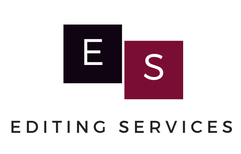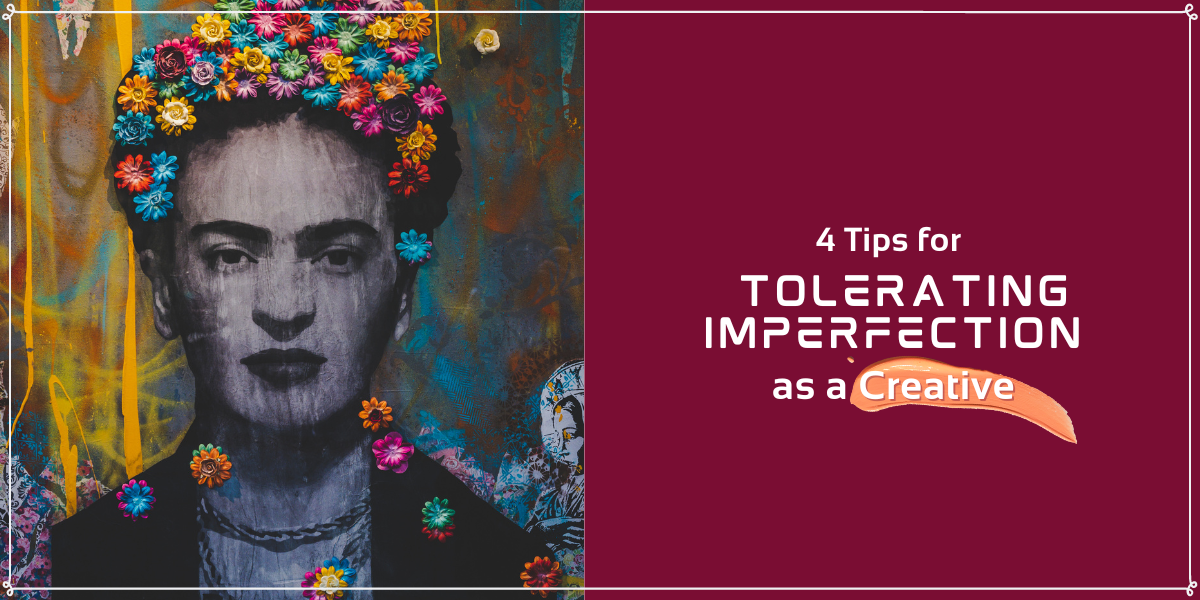E.S. Editing BlogUseful tips about editing, writing, creativity, reading, and the publishing industry
|
|
I never dreamed I would be sharing about how I navigate perfectionism on a podcast, but when my fellow editor Lauren invited me to speak about how I use my art practice to help me avoid getting bogged down and stuck, I took the leap and did it (my first one!). I hope some of my thoughts will help you, too.
Funnily enough, my perfectionism almost did get the better of me, screaming at me to decline the invite, and when I got over that hurdle to please send an email to get out of it before you embarrass yourself… Perfectionism pairs nicely with overwhelm and impostor syndrome, doesn’t it? ? Well, I’m happy to report that I didn’t listen to those inner voices and I did the hard thing anyway. As it turns out, that’s one of the key points I touched on: the irony of waiting until you’re ready before you do the thing when it’s in doing it that you become ready. ✅If you like listening more than reading, here’s the full podcast episode: Tolerating Imperfection (51 mins!). I’ll list some highlights below.
✅ P.S. If you’re more overwhelmed than stuck in a rut with perfectionism, check out my top-performing blog post about Dealing with Overwhelm in the Writing Process.
1. Become Aware of Your Particular Flavour of PerfectionismLauren and I joked that we have “twin” perfectionisms because so many of our quirks align. But here’s the thing: perfectionistic tendencies can present in so many different ways, and the experience is not the same for everyone. It’s not a monolith. It’s really helpful to discover what your perfectionism looks like in your life. Here are three questions to consider that will help you see where your perfectionism comes into play.
For me, it’s consistently at the end because it’s connected to performance, rejection, being seen… Perhaps you can relate? ? Growing up, I did competitive gymnastics. I guess I developed a story about where self-worth comes from: I’m good at things when it’s just for me, but I freeze under pressure when people are watching and evaluating. Because their evaluation means something about my worth. That translated into a form of performance pressure in other areas, where I would dread pressing send on an edit because I wondered how it would be received. Or I would procrastinate on moving forward on my goals/plans out of fear that they wouldn’t work out. That feeling has faded over time as I’ve developed confidence and expertise, but it still shows up in sneaky ways.
I highly recommend Lauren’s workshop to go deep on this: Creating Through Perfectionism Workshop. These reflective questions and more helped open my eyes to what my tendencies are, and where they might come from.
2. You Won’t “Overcome” Your Perfectionism (and That’s Okay)It’s important to note that perfectionistic tendencies are not something you overcome once and for all, but you can become aware of when they happen, how and why they show up for you, and then find strategies for navigating and tolerating imperfection. Tolerance is a great way to conceive of this, because you’re basically teaching your body how to have tolerance for imperfect things and not freak out. (Thanks to Lauren for framing it like that in the podcast!) Since it’s impossible to control everything to the degree that would satisfy your nagging perfectionism, it’s important to learn to tolerate small doses of imperfection. This has been so useful in my life. Here’s how. I started a consistent art practice. Sometimes it’s a daily thing, and then it might swing back to a every few days, maybe once a week. But every collage I make, every 15 mins of making a random abstract pastel swatch, every page in my art journal helps me practice making and sitting with small decisions. The practice helps me slowly build up tolerance. It helps me sit with the discomfort of not knowing what I’m doing (in a safe space) and to let meaning emerge before my very eyes as I’m creating (especially so when creating collages, abstract paintings, and art journaling). The perfectionist in me demands that I have a clearly defined goal, that I establish criteria for excellence, that I know precisely where I’m going and why. I now love the process of letting meaning emerge from my art. Going in, I may have NO clue what I’m doing, but then end up creating something amazing I could have never really planned for. It’s those happy accidents that create the best art. And it’s in this process that I become more flexible, more willing to experiment and lean into iteration. 3. Start Small to Build Your Tolerance (12:22)Making art every day has slowly helped me release my stranglehold of wanting to know everything before I start. I wanted to make art more regularly (instead of the one Commonplace Zine that would take me all year to make any progress on…). And so I started doing small things, in all sorts of mediums, just to make it part of my routine. Tacking my favourites to my wall helps me remember what I’ve done, showcasing to myself my accumulated efforts when I feel like I’m spiraling into doubts. Developing a consistent creative writing routine has a similar effect—accumulating scenes, characters, random bits of poetry, one page at a time. Lauren and I both had the experience of prolonged ‘creative droughts.’ As kids, we were both really creative, but at some point we put away our creative supplies (in both cases paint) and just stopped. It was easier to not feel the anguish of not doing perfect work immediately and every time. This happens with a lot of creatives when they come up against rejection. And in my case, it shut me down for over a decade, so much so that I even forgot I was a creative person at all! Decouple Self-Worth from Your Output If that’s you, know that you’re not alone and there are ways to navigate the fear of rejection (which is a skill writers especially need to hone). Rejection is just part of the process, and it’s important that you develop your own way of decoupling your self-worth from your output and reception. The prospect of a one-star review (because let’s be real, even the most famous writers get bad reviews) should not keep you from publishing your work. This can be especially tough for sensitive, introverted folks, and I’m absolutely in that category too. With my art I’m collecting evidence that I’m slowly tolerating more and more imperfection. And you can too. Whatever you can do to inject more ‘process over product’ into your life, it’ll help. Why not give it a try. 4. Show the Messy Middle of ThingsOh boy, do I struggle with this! Who wants to be vulnerable and show that they’re not perfect at something? Me, that’s who. ? It’s important for people to see your processes, how you do things. As an author, this could be talking about your writing process, what tools you use, what you’re struggling with, and sharing those experiences in a newsletter or blog. The perfectionistic tendency is to go into a writing or editing cave and only show the end result once you’ve tweaked and ‘perfected’ it to oblivion. And talk about it exactly one time and move on to the next shiny object. I’ve learned over the past year that it’s okay (and even good!) to show people how you do things and what you struggle with. I’m not the best at this, but I’ve come a loooong way. Just this month I restarted my newsletter, business blog, and creative blog. The more I do these somewhat painful, vulnerable-to-me scary things, the easier it gets. You probably just rolled your eyes so hard at that. And I get it; it’s cliché, it’s obvious, it’s what everyone says. It also happens to be true, and you can harness it in a way that works for you. What small things can you try that will help you build up that tolerance? Here are a few practical ideas:
Are you a perfectionist? Did something in particular resonate with you? Let me know in the comments! ?
|
Proud member of
|
Copyright © 2024 E.S. Editing Services
Privacy Policy |






Leave a Reply.